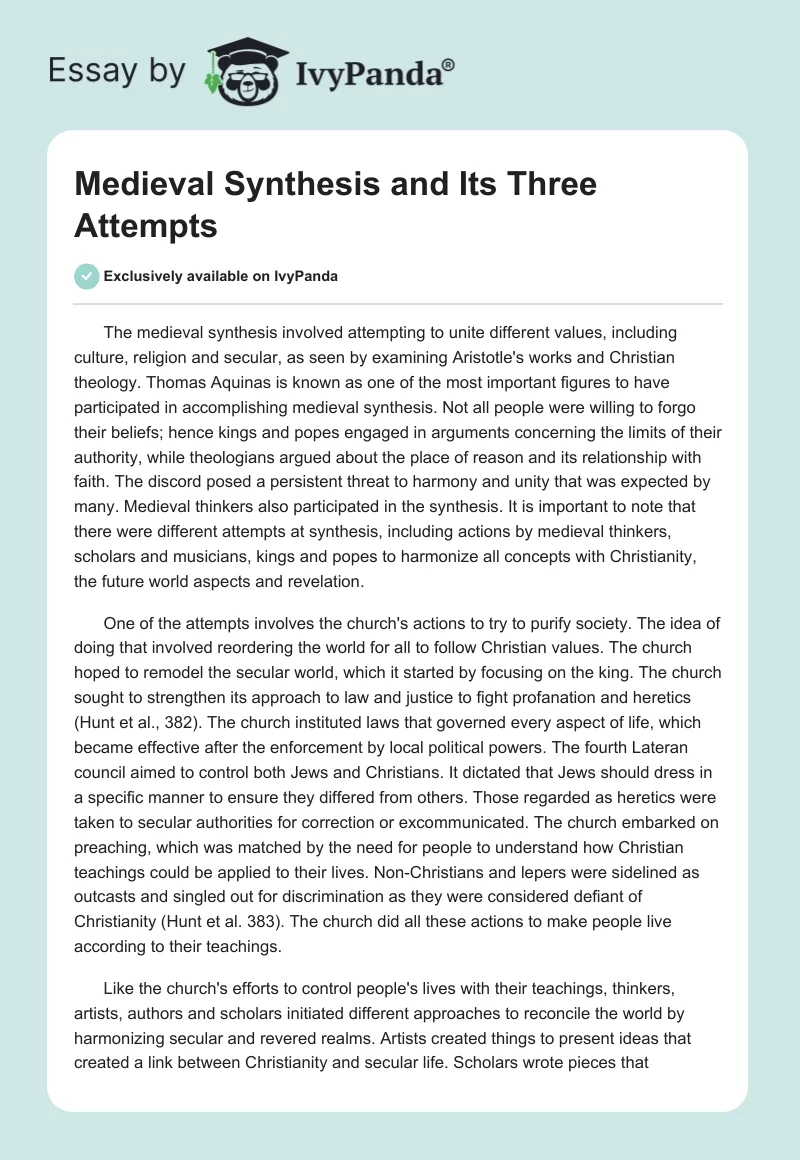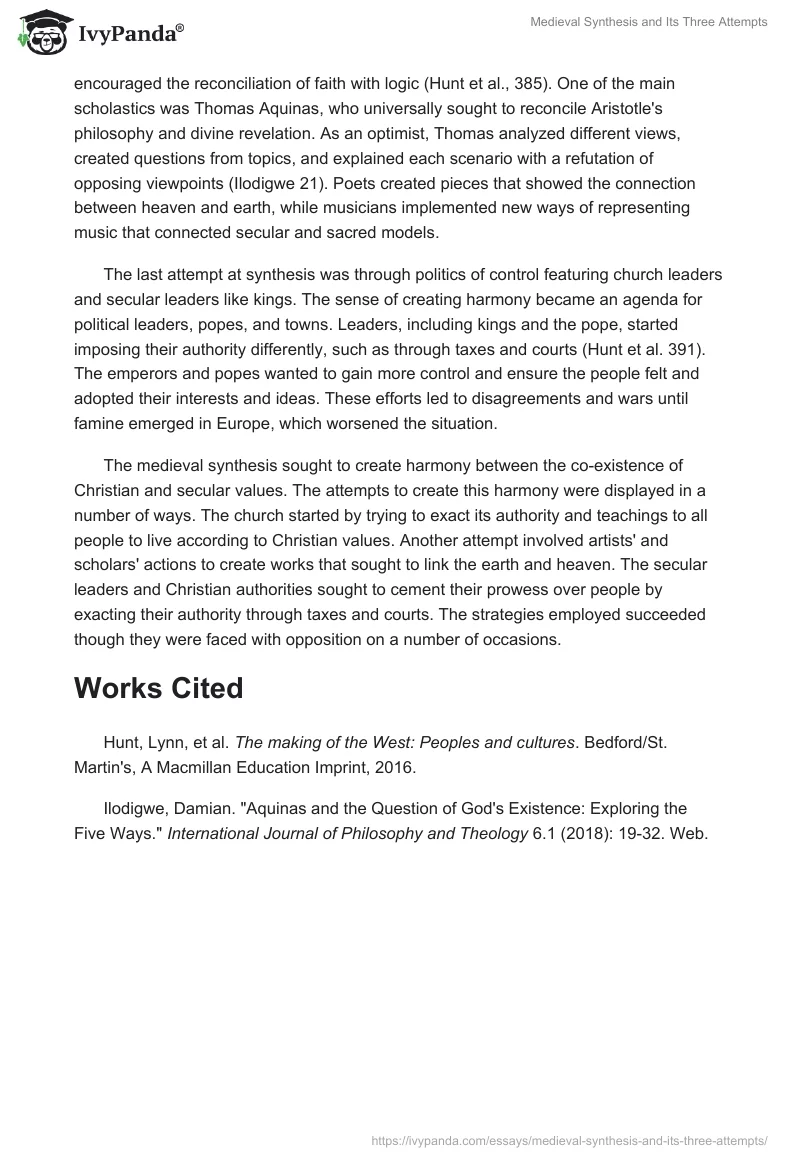The medieval synthesis involved attempting to unite different values, including culture, religion and secular, as seen by examining Aristotle’s works and Christian theology. Thomas Aquinas is known as one of the most important figures to have participated in accomplishing medieval synthesis. Not all people were willing to forgo their beliefs; hence kings and popes engaged in arguments concerning the limits of their authority, while theologians argued about the place of reason and its relationship with faith. The discord posed a persistent threat to harmony and unity that was expected by many. Medieval thinkers also participated in the synthesis. It is important to note that there were different attempts at synthesis, including actions by medieval thinkers, scholars and musicians, kings and popes to harmonize all concepts with Christianity, the future world aspects and revelation.
One of the attempts involves the church’s actions to try to purify society. The idea of doing that involved reordering the world for all to follow Christian values. The church hoped to remodel the secular world, which it started by focusing on the king. The church sought to strengthen its approach to law and justice to fight profanation and heretics (Hunt et al., 382). The church instituted laws that governed every aspect of life, which became effective after the enforcement by local political powers. The fourth Lateran council aimed to control both Jews and Christians. It dictated that Jews should dress in a specific manner to ensure they differed from others. Those regarded as heretics were taken to secular authorities for correction or excommunicated. The church embarked on preaching, which was matched by the need for people to understand how Christian teachings could be applied to their lives. Non-Christians and lepers were sidelined as outcasts and singled out for discrimination as they were considered defiant of Christianity (Hunt et al. 383). The church did all these actions to make people live according to their teachings.
Like the church’s efforts to control people’s lives with their teachings, thinkers, artists, authors and scholars initiated different approaches to reconcile the world by harmonizing secular and revered realms. Artists created things to present ideas that created a link between Christianity and secular life. Scholars wrote pieces that encouraged the reconciliation of faith with logic (Hunt et al., 385). One of the main scholastics was Thomas Aquinas, who universally sought to reconcile Aristotle’s philosophy and divine revelation. As an optimist, Thomas analyzed different views, created questions from topics, and explained each scenario with a refutation of opposing viewpoints (Ilodigwe 21). Poets created pieces that showed the connection between heaven and earth, while musicians implemented new ways of representing music that connected secular and sacred models.
The last attempt at synthesis was through politics of control featuring church leaders and secular leaders like kings. The sense of creating harmony became an agenda for political leaders, popes, and towns. Leaders, including kings and the pope, started imposing their authority differently, such as through taxes and courts (Hunt et al. 391). The emperors and popes wanted to gain more control and ensure the people felt and adopted their interests and ideas. These efforts led to disagreements and wars until famine emerged in Europe, which worsened the situation.
The medieval synthesis sought to create harmony between the co-existence of Christian and secular values. The attempts to create this harmony were displayed in a number of ways. The church started by trying to exact its authority and teachings to all people to live according to Christian values. Another attempt involved artists’ and scholars’ actions to create works that sought to link the earth and heaven. The secular leaders and Christian authorities sought to cement their prowess over people by exacting their authority through taxes and courts. The strategies employed succeeded though they were faced with opposition on a number of occasions.
Works Cited
Hunt, Lynn, et al. The making of the West: Peoples and cultures. Bedford/St. Martin’s, A Macmillan Education Imprint, 2016.
Ilodigwe, Damian. “Aquinas and the Question of God’s Existence: Exploring the Five Ways.” International Journal of Philosophy and Theology 6.1 (2018): 19-32. Web.


